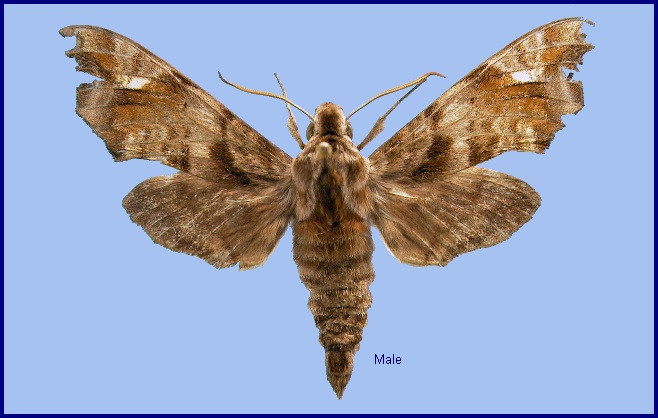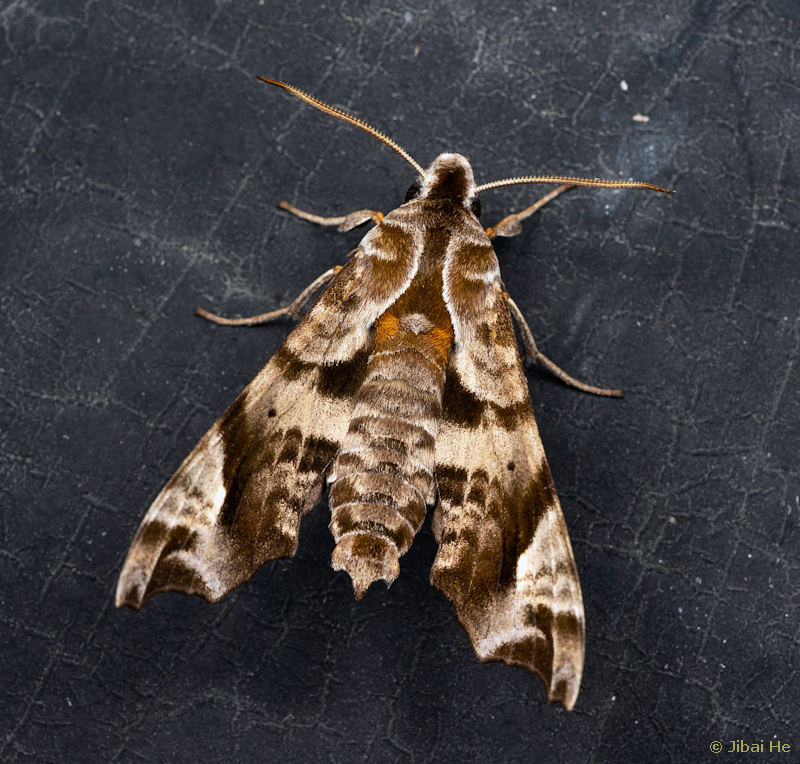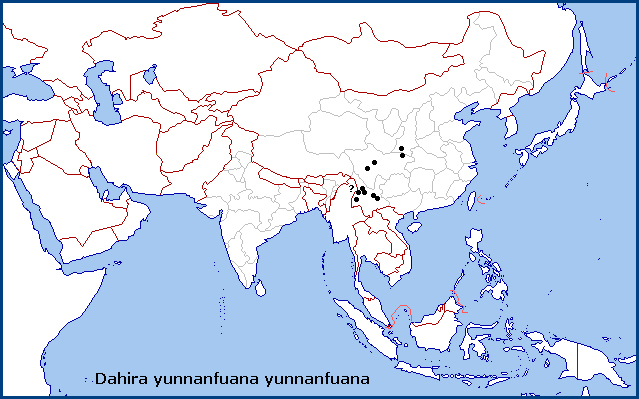
Acosmeryx yunnanfuana Clark, 1925, Proc. New Engl. zool. Club 9: 34. Type locality: Southeastern China, [Yunnan,] Yunnanfu [Kunming].
Synonym. Acosmeryx yunnanfuana Clark, 1925.
Note. Transferred to Lepchina by Brechlin, 2000, Nachr. entomol. Ver. Apollo (N.F.), 21: 144. Transferred to Dahira by Brechlin & Melichar, 2006, Nachr. entomol. Ver. Apollo (N.F.), 27(4): 210.
Note. Up until recently the taxon known as Dahira yunnanfuana (Clark, 1925) was considered to be a single taxonomic entity occuring along the southeastern slopes of the Himalaya, from Nepal (Haruta, 1992) across southern Xizang/Tibet (China), Bhutan (Dierl, 1975; Irungbam & Irungbam, 2019), northern Burma/Myanmar, to central China. However, the work of Haxaire, Melichar & Manjunatha (2021) split this taxon into three separate subspecies, namely Dahira yunnanfuana yunnanfuana (Clark, 1925) (occurring in China, from Yunnan to Shaanxi), Dahira yunnanfuana montivaga (Kernbach, 1966) (occurring in Nepal, Bhutan and southern Xizang/Tibet, China), and a new subspecies Dahira yunnanfuana indicus Melichar, 2021 (from Arunachal Pradesh, India). This was based not on wing pattern but on two small characters in the male genitalia that seemed both constant and rather easy to observe. The first was the end of the apical process of the phallus. This structure was blunt and multidentate in all dissected central/southern Chinese specimens, whatever their origin, while it was almost always sharp and tapered in specimens from Nepal, Xizang/Tibet and India. The second character was the shape of the harpe, which separated out into three patterns: tapered and nearly rectilinear in subspecies yunnanfuana; wider and flatter in Nepalese insects (subspecies montivaga) and broad basally, but abruptly narrowed into a strongly curved hook in Indian insects (the new subspecies indicus). The exact boundary between the Himalayan and Chinese populations is unknown at present but is likely to be somewhere in Burma/Myanmar.
Variable.

Flies at between 1300m and 3200m altitude.
China: 15.iii (Lushui); 5.iv (Lushui); 12-24.iv (Shimian County; Ya'an); 26.iv (Gongga Shan; Lijiang); 27.iv (Jiaozi Xue Shan/Jiaozi Snow Mountain); 1-2.v (Tengchong); v (Foping Nature Reserve); 17.v.2018 (Lijiang); vi (Siguniang Shan, Wolong Nature Reserve).
OVUM: Unknown.
LARVA: Unknown.
PUPA: Unknown.
Larval hostplants. Unknown.
Unknown.
China: Shaanxi (Foping Nature Reserve, Qinling, 1800m); Sichuan (Gongga Shan/Minya Konka, 2500-3200m; Siguniang Shan, Wolong Nature Reserve; Shimian County, 1300m; Yingjing, Ya'an); Chongqing (north); Yunnan (Lufeng County; Jiaozi Xue Shan/Jiaozi Snow Mountain, Luquan County; Kunming; Tengchong, 2200m; Jade Dragon Snow Mountain Resort, Lijiang, 2800m; Renhe Village, Lijiang, 2300m; Liuku/Lushui, Nujiang Lisu Autonomous Prefecture, 2520m; Dali).
Southern and central China, from Yunnan northeastwards to southern Shaanxi.

Holarctic; eastern Palaearctic region. Pleistocene refuge: Monocentric -- Yunnan refugium.
 Return to Sphingidae of the Eastern Palaearctic species list
Return to Sphingidae of the Eastern Palaearctic species list